Invoice Scanning: Go Paperless Painlessly With Stampli
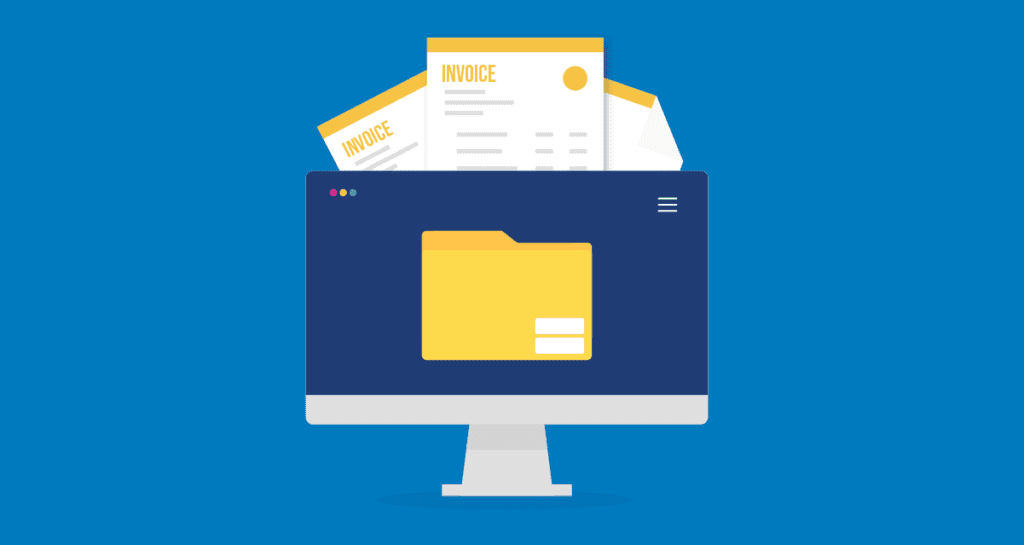
In 2021, Stampli surveyed 282 finance leaders about their biggest accounts payable headaches.
Just under half (40%) of the respondents said they still receive paper invoices.
Since AP teams need to key in paper invoices, a time-consuming and error-prone process, it should come as no surprise that slow approvals, too much paper, and too many manual processes topped the list of AP headaches in the report.
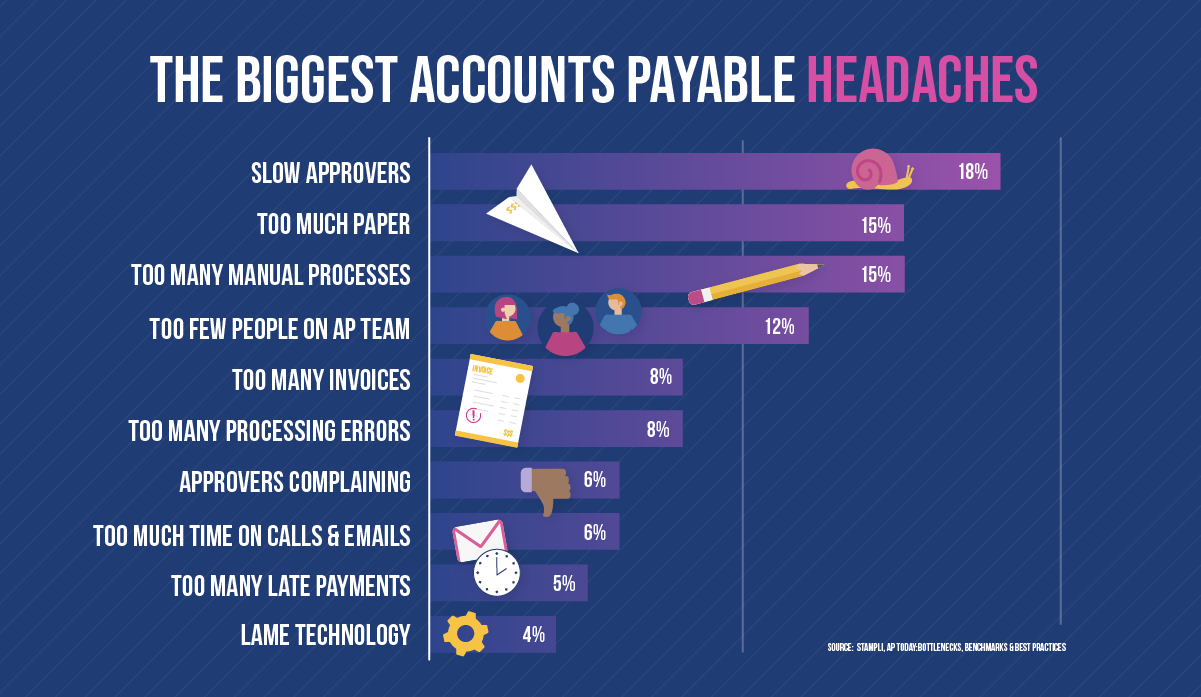
The problem isn’t going away anytime soon, either. According to AP in 2023: Expectations, Technology, Opportunity, 80% of finance leaders anticipate a rise in the number of invoices they’ll have to handle, while 53% expect the complexity of invoices to increase.
The bottom line is that as businesses grow, the volume and complexity of invoices grow right along with them. If your business is one of the 40% still receiving paper invoices, your headaches will grow too.
Relief is in sight. Read on to learn how invoice scanning and AP automation software can reduce the volume of paper invoices and the headaches you need to manage.
The business case for invoice scanning
I own a biotech company specializing in creating orthopedic appliances and prosthetics like knee braces and artificial limbs. Our products are complex, made from advanced materials, and require precise specifications for each customer. Our supply chain includes various professionals such as textile producers, material suppliers, fabricators, healthcare professionals, engineering and design firms, and others.
Since every product is custom-made and unique, we often order personalized products and services from our suppliers, resulting in complex invoices that list each component and its price.
We are very precise in our costing because each product has its own unique price, and we need to accurately determine the input costs for each one to maintain profitability.
However, many of our suppliers send paper invoices. Reconciling these invoices with our manufacturing process and purchase orders is time-consuming. Plus, because our products are so complex and specialized, our AP employees need the skill and expertise to sort through hundreds of line items and ensure each one is coded correctly in GL.
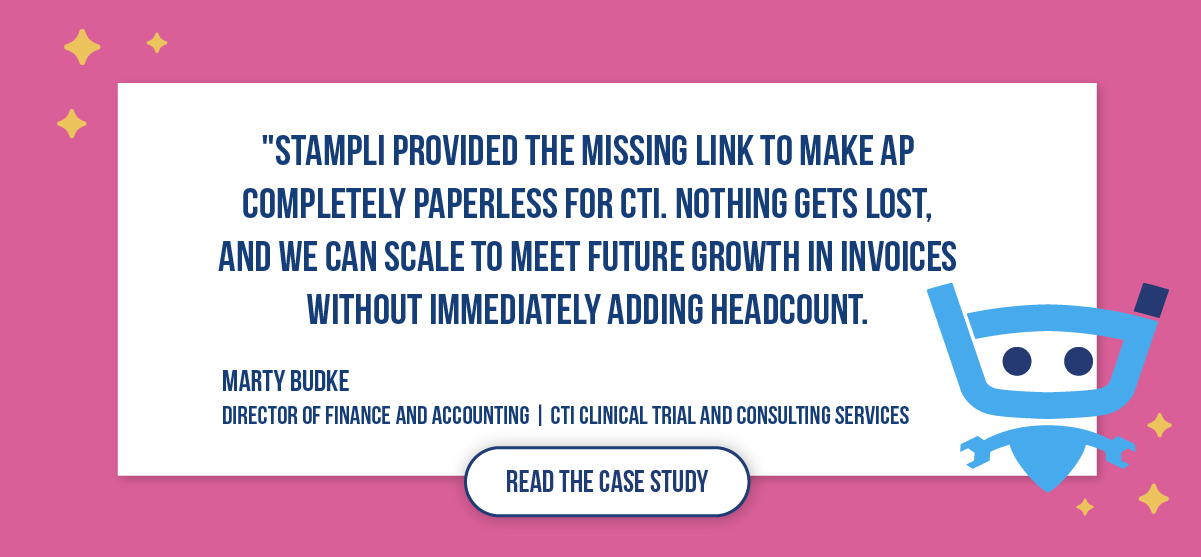
Our business is growing, and so is the volume and complexity of the invoices coming in the door. The extra work is putting pressure on my AP team. It takes a long time to train someone up to the level they can understand our invoices, and I can’t easily scale up the team to meet the increased volume. I need a better way to handle paper invoices and data capture, and I need it fast.
I need a document processing solution that can help me manage or reduce the volume of paper documents my AP team needs to handle. It also wouldn’t hurt if the solution could automate the GL coding component of our invoice processing workflow. And because we’re growing, the solution needs to be scalable.
Here’s how we discovered that invoice automation provided the best ROI. Let’s start with our initial goals for invoice processing.
Goals for an invoice scanning solution
Although our primary goal was to improve the overall efficiency of our invoice processing, we had a number of other goals in mind. I’ll take you through them.
Efficiency
As I mentioned, our number one goal was to improve our invoice processing efficiency. We needed a solution that improved processing times, reduced human error, and improved data extraction and coding accuracy.
Cost savings
It’s expensive to hire and train new AP employees, so we’d prefer to reduce our dependence on manual processing. Plus, our existing AP clerks know our product cost structure inside and out. I’d love to redeploy these employees to marketing, where those skills could drive more sales for us.
Fewer errors
It goes without saying that an error can be very costly to a business like ours. A reduction in invoice errors would pay dividends in increased profitability.
Better data accuracy
Digitizing paper invoices lets us store them in a central location where we can easily track them down if needed. This would be a big improvement over storing them in file cabinets where they can get lost in the paper shuffle.
Improved security and compliance
By storing invoices digitally, we can control access more easily and ensure that we comply with data handling regulations. It also lets us maintain a complete AP audit trail, which comes in handy when it’s time to review our books.
Disaster recovery
In the event of a disaster like a fire or a flood, we can be sure our digitally-stored invoice data is safe.
Scalability
A fully-automated invoice management solution is more easily scalable than manual processes, ensuring that our accounts payable processes support growth rather than preventing it.
Sustainability
Switching from paper means we can substantially reduce our environmental footprint.
With these goals in mind, we looked at our options for invoice scanning, processing, and archiving. Here’s what we found.
Options for automated invoice scanning
Invoice scanning is the process of digitizing a paper invoice using a scanner, phone, or other device. We looked at three different ways to scan invoices: straight digital scanning, optical character recognition (OCR) scanning, and outsourcing.
Digital scanning
Digital scanning is exactly that: using a digital scanner to copy a paper invoice and convert it to a digital format like a PDF or TIFF file.
Digital scanning has the advantage of being low-cost – all we need is a scanner and someone to scan documents. However, we only end up with a digital image – we still need to extract data from the invoice and into our system—more on that in a second.
OCR invoice data capture
OCR systems function similarly to digital invoice scanners, capturing a digital image of invoices. However, they take it a step further by utilizing OCR technology to extract and store invoice data automatically. This allows us to obtain the invoice data in a format, such as a CSV file, that we can easily import into our accounting system, eliminating the need for manual data entry. Some OCR software also incorporates intelligent document processing capabilities like artificial intelligence and machine learning to increase scanning accuracy by learning data fields, invoice formats, templates, and other invoice details.
The downside of OCR systems for us is that they’re expensive. Many require on-site scanners, and the invoice processing software can be pricey. Plus, the scanning process still contains the manual step of uploading the scanned data into our accounting system. And if there’s a scan error, we may not find it until the three-way matching process, which means we will need to go back and find the original paper invoice (or its scanned image) to confirm the data is correct.
Some invoice OCR scanning systems promise API integration with our ERP, which would be nice to have. Still, we’re wary of tying ourselves to such a large investment when it’s unclear whether it will improve the accuracy of our transaction data.
Outsourcing invoice scanning
We can also outsource our invoice scanning to a third party. The scanning provider will scan and verify our invoices and return them to us in a digital file, which we will upload into our accounting software.
Although outsourcing has cost advantages, and we like that the data will be verified, we still had a couple of issues with this solution. First, we were reluctant to share our data, which included personal information for our end clients, with anyone outside the US. That meant we would need to look for a domestic outsourcing company, which proved to be less of a cost advantage than we wanted.
Also, there was still the problem of data accuracy – we would only be able to detect errors during three-way matching, which meant tracking down the original invoice or its image. And since the originals would be in storage somewhere, that meant delays in invoice processing.
Ultimately, no one solution worked for us. We realized that we really had two problems to solve:
1) Reducing the volume of paper invoices by convincing our vendors to switch to digital invoices
2) Finding a way to process the paper invoices we couldn’t replace with digital ones
That meant we needed to dig a little deeper than just invoice scanning, which brought us to the best invoice processing solution: Stampli.
But before we go there, let’s talk about how we convinced our vendors to switch to electronic invoices.
Going paperless – how to convince vendors to make the switch
When we began looking at switching to an invoice capture software solution, almost half of our vendors were sending us paper invoices. Many of our vendors have been with us since we began, and we never got around to talking to them about switching to electronic invoices. We knew how their invoices were set up, so it wasn’t hard to do manual data entry and invoice validation.
As our business expanded and we increased our orders from vendors while adding new ones, we received a lot more paper invoices. These invoices also became more complicated as our product offerings evolved. We needed to do something about the volume of paper, but we value our vendor relationships.
Call us old-fashioned, but we weren’t comfortable just telling our vendors to switch to electronic invoicing. So we looked for a solution that would make it easier and worthwhile for them to switch to digital invoicing.
We looked at cloud-based accounts payable automation solutions that featured advanced invoice scanning and processing capabilities, especially ones that offered ML features for GL coding and error detection. Because we weren’t convinced that more efficient paper invoice scanning was the right solution for us, we looked at AP automation solutions that offered alternative ways for vendors to send invoices.
Stampli met our expectations. Not only did it have the invoice processing capabilities we needed, but it offered multiple ways to make it easier for vendors to switch from paper to paperless invoicing.
First, Stampli offered a couple of ways for vendors to send invoices to us. They could send them to our central email address or go in and upload the invoice via the vendor portal.
Second Stampli’s vendor portal was a game changer. Not only could vendors upload their invoices directly to us, but they could also check on payment status (always popular) and ask and answer questions from our AP team. Plus, we opted for Stampli’s Advanced Vendor Management option, which allowed our vendors to instantly share documents such as certificates, insurance information, product specs and standards, and more. We loved it because we knew our vendors were up to date on their docs. Vendors loved it because our team wasn’t calling them every second day looking for documentation.
Finally, because Stampli was so efficient at GL coding invoices and managing approvals, our vendors got paid faster. Again, something that’s always popular with suppliers, especially the small ones who have been with us since the beginning.
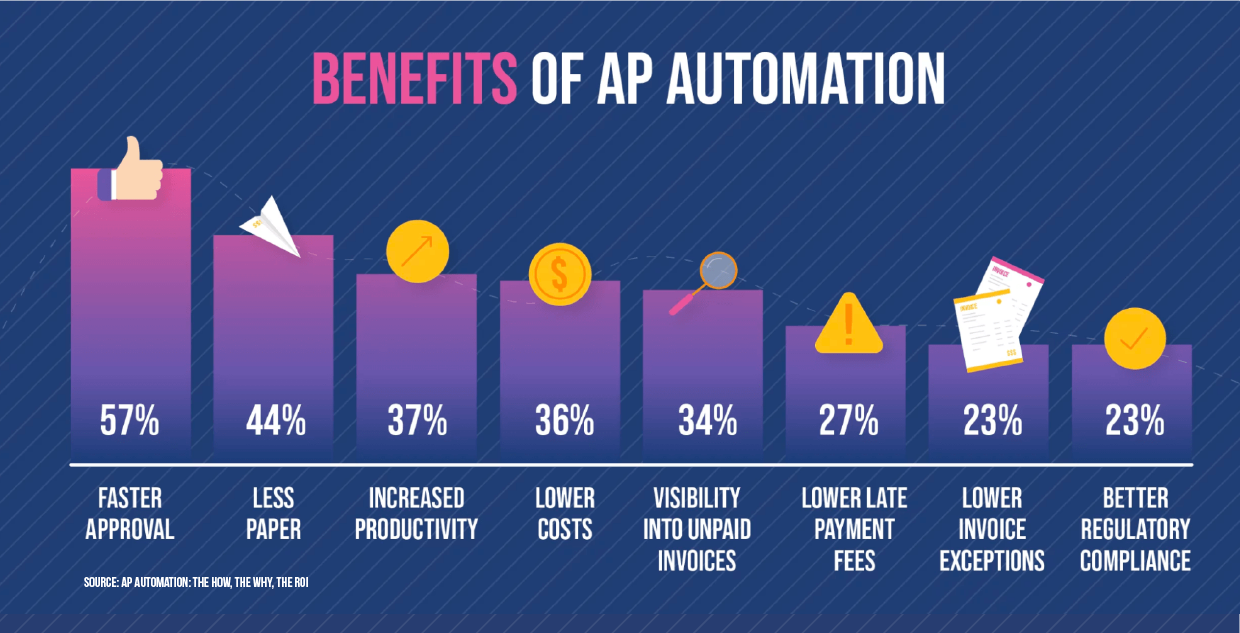
We appreciated that Stampli enabled us to move to a more efficient way to process invoices and do it in a way that benefitted the vendors who have grown beside us. Once we got Stampli up and running, we reached out to our vendors and told them of the benefits of going paperless. Over 80% of them switched right away.
That left the other 20% who were still sending paper invoices. We’re still working with those suppliers to convince them to switch. In the meantime, we came up with an invoice processing solution for those remaining paper invoices.
Stampli’s AI (Billy the Bot) can read and process pdf invoices. So, we bought a commercial scanner and scanned the invoices into pdf files, then uploaded the scanned documents into Stampli. That way, we knew these invoices would be coded correctly, and we’d immediately detect any mistakes. The added accuracy and reduced error rate more than made up for the cost of having someone manually feed invoices into the scanner. Finally, we could use the Stampli mobile app to scan and upload an invoice directly from our phones, which came in handy.
Working with Stampli helped us make a big dent in the number of paper invoices we process, and it helped us boost our productivity. It also freed up a lot more money – by paying vendors early, we avoided late fees and had a much better idea of our cash flow. That’s always a positive for a growing business like ours.
If you’re interested, here’s a bit about Billy and how Stampli can help your business manage paper invoices.
Smart invoice processing with Billy the Bot
If you want to streamline your AP team’s workload, Billy the Bot is the perfect tool for the job. It’s designed to learn and adapt to your invoice management processes, so you don’t have to change your unique business structure. With Billy on your side, you can easily manage time-consuming manual tasks like invoice capture, coding, approvals, fraud detection, and syncing invoice data to your ERP.
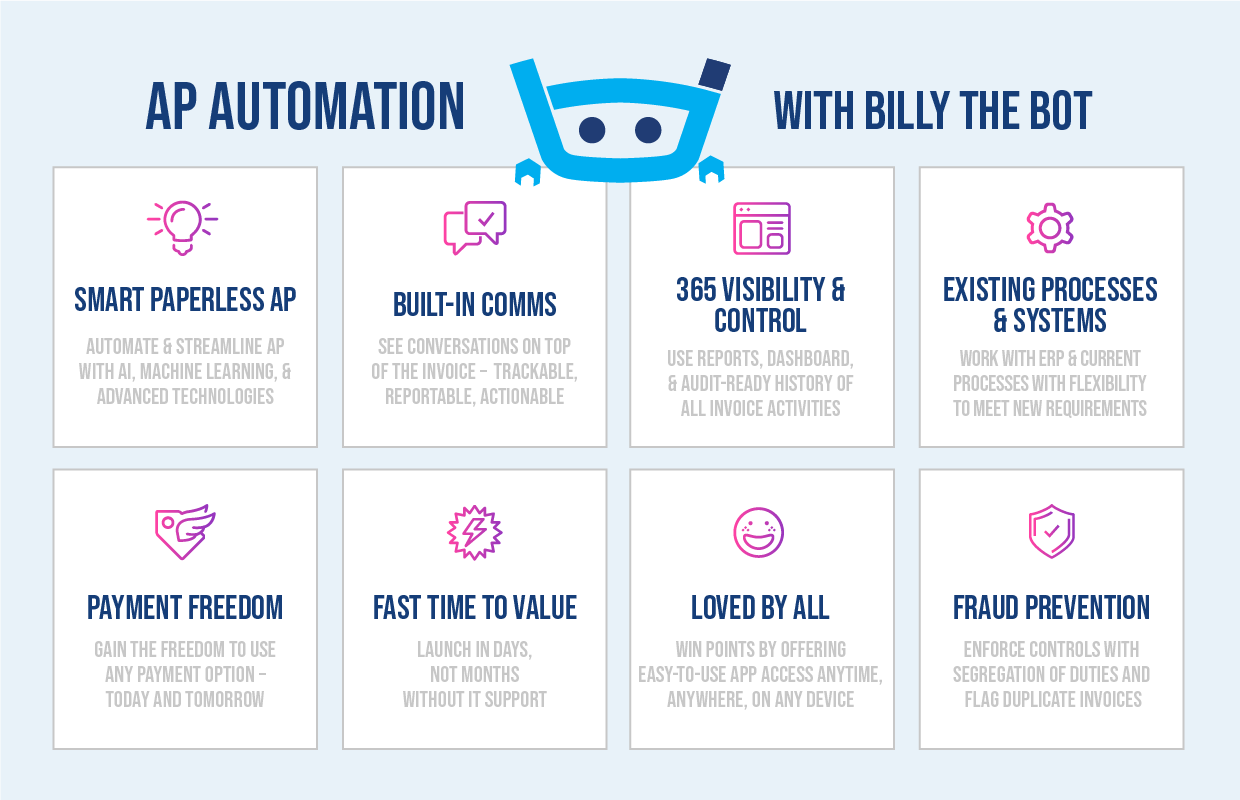
With machine learning, Billy can capture and code transaction data from both paper and electronic receipts, and he’s capable of understanding all line types, including general ledger, charges, fixed asset lines, and resources. Additionally, Billy can handle partial payment workflows and multiple POs and support invoice management for multiple subsidiaries, locations, currencies, and tax structures.
Finally, Billy can identify potential errors and signs of fraud that might go unnoticed, such as slight changes to invoice details or inflated line items.
By centralizing all invoice communications on the top of the invoice, Billy facilitates smooth communication and collaboration across the invoice workflow. Plus, Stampli features seamless integration with over 70 ERPs and accounting systems to provide a single source of truth for transaction data across the whole organization.
Go from paperwork to paperless with Stampli
Stampli is the only solution designed to meet the unique needs of Accounts Payable. It streamlines invoice management, eliminating the need for external communication, ad-hoc workarounds, and manual AP tasks. Stampli provides complete visibility into every transaction, making audits and month-end close easy and informing strategic business decisions.
Stampli’s unique ability to streamline invoice processing and eliminate manual paper-based processes empowers your business to move away from paper invoices efficiently and painlessly. Plus, with Advanced Vendor Management and payment flexibility via Stampli Direct Pay, Stampli lets you make going paperless a plus for your vendors.
The case studies speak for themselves. Stampli delivers real results by helping businesses optimize invoice processing workflows without changing their business processes or reworking their ERP system. Contact us today to set up a free demo.

